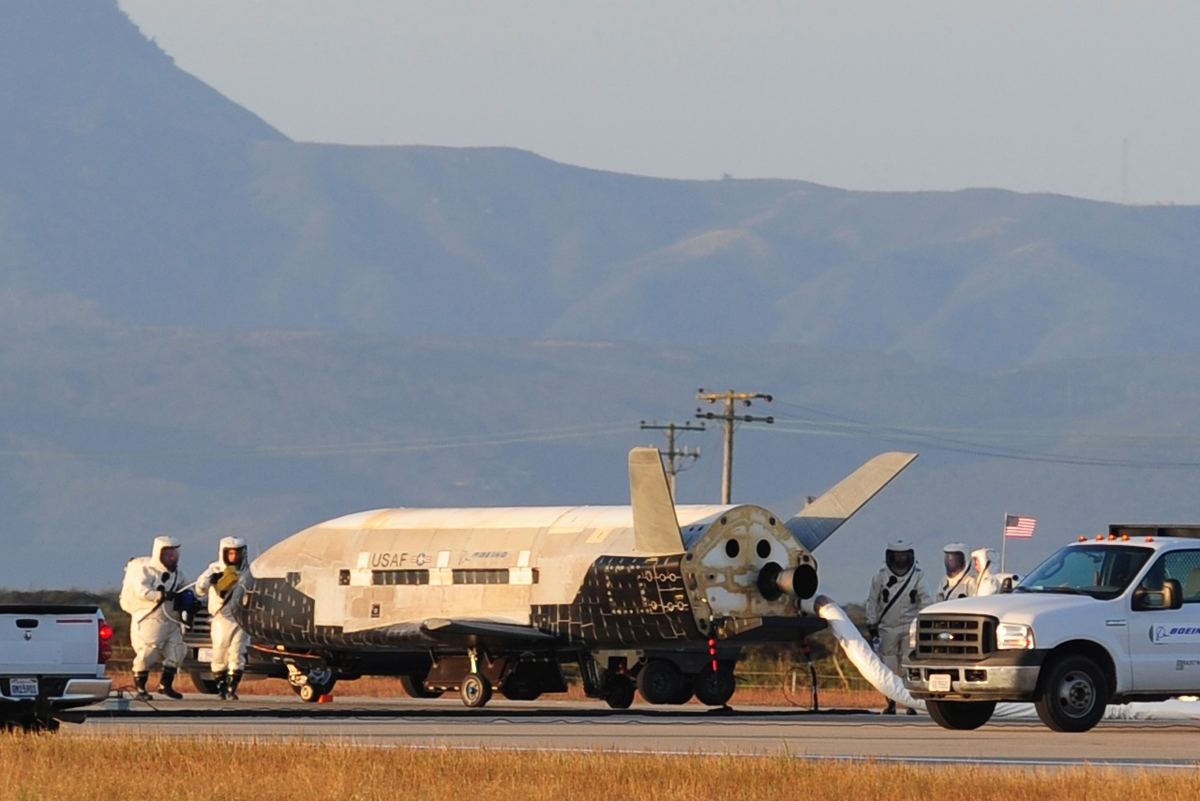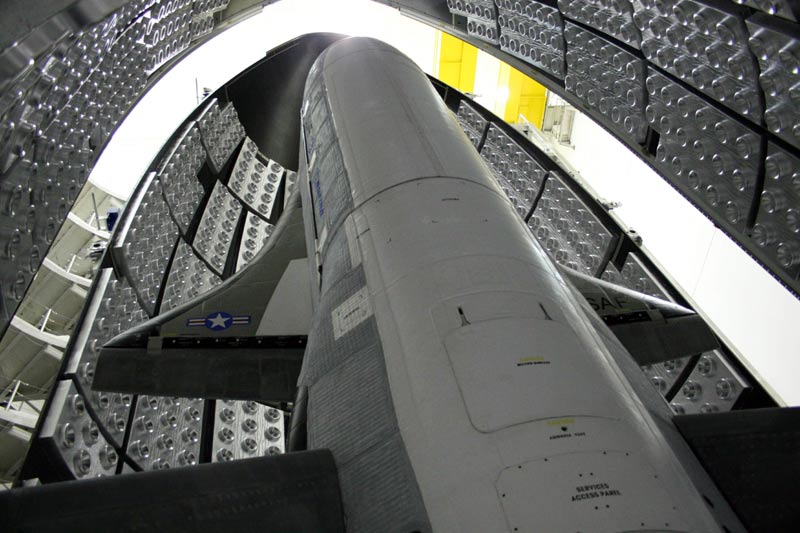Air Force Launching Secretive X-37B Space Plane in October, Could Land in Fla.

The U.S. military's hush-hush robotic X-37B space plane is slated to blast off again next month, Air Force officials say. The mission will test the robotic spacecraft's reusability and may eventually land on the Florida runway once used for NASA space shuttles.
The X-37B space plane's next mission — called Orbital Test Vehicle-3, or OTV-3, because it is the program's third-ever spaceflight — is scheduled to launch aboard an Atlas 5 rocket from Florida's Cape Canaveral Air Force Station (CCAFS) sometime in October.
"Preparations for launch at Cape Canaveral have begun," said Major Tracy Bunko at the Pentagon’s Air Force press desk. "We are on track to launch OTV-3 next month; however, the exact date remains subject to change based on range conditions, weather, etc."

A mysterious mission
As with the X-37B program's two previous spaceflights — OTV-1 and OTV-2 — OTV-3's payload and mission details are classified. But the focus remains on testing vehicle capabilities and proving the utility and cost-effectiveness of a reusable spacecraft, Bunko told SPACE.com. [Photos: The X-37B Space Plane]
Bunko said in an earlier communiqué that this third flight will use the same X-37B spacecraft that flew the first test flight, the OTV-1 mission, back in 2010.
That maiden voyage of the miniature space plane lasted 225 days. It launched into orbit on April 22, 2010, and then landed on Dec. 3 of that year, zooming in on autopilot over the Pacific Ocean and gliding down onto a specially prepared runway at Vandenberg Air Force Base in California.
Get the Space.com Newsletter
Breaking space news, the latest updates on rocket launches, skywatching events and more!
A different X-37B vehicle made a similar Vandenberg touchdown this past June 16, having stayed in orbit for 469 days on its OTV-2 mission.
The X-37B program is being run by the U.S. Air Force Rapid Capabilities Office. The two space planes — which are 29 feet (8.8 meters) long and 15 feet (4.5 m) wide, with a payload bay about the size of a pickup truck bed — were built by Boeing Government Space Systems.
While they're sparing with details about the X-37B program, Air Force officials say the vehicles enable them to test out how new technologies perform in space.
“One of the most promising aspects of the X-37B is it enables us to examine a payload system or technology in the environment in which it will perform its mission and inspect them when we bring them back to Earth,” Bunko said. “Returning an experiment via the X-37B OTV enables detailed inspection and significantly better learning than can be achieved by remote telemetry alone.”
A new landing site?
While both previous X-37B missions touched down at Vandenberg, the Air Force is considering landing future flights at NASA's Kennedy Space Center in Florida, next door to the Cape Canaveral launch site.
In fact, the Air Force is currently conducting taxi and braking tests as part of an ongoing appraisal. The prospect of a returning the robotic space plane to the KSC landing strip — which was used by NASA's now-retired space shuttle fleet — is seen as a cost-saving measure.
"We are also considering consolidating landing, refurbishment and launch operations at KSC or CCAFS in an effort to save money," Bunko said.
“We are seeking to leverage previous space shuttle investments and are investigating the possibility of using the former shuttle infrastructure for X-37B OTV landing operations," Bunko added. "Those investigations are in an early state, and any specifics will not be known for some time, but could potentially be used as early as for the landing of OTV-3."
Leonard David has been reporting on the space industry for more than five decades. He is a winner of last year's National Space Club Press Award and a past editor-in-chief of the National Space Society's Ad Astra and Space World magazines. He has written for SPACE.com since 1999.
Join our Space Forums to keep talking space on the latest missions, night sky and more! And if you have a news tip, correction or comment, let us know at: community@space.com.

Leonard David is an award-winning space journalist who has been reporting on space activities for more than 50 years. Currently writing as Space.com's Space Insider Columnist among his other projects, Leonard has authored numerous books on space exploration, Mars missions and more, with his latest being "Moon Rush: The New Space Race" published in 2019 by National Geographic. He also wrote "Mars: Our Future on the Red Planet" released in 2016 by National Geographic. Leonard has served as a correspondent for SpaceNews, Scientific American and Aerospace America for the AIAA. He has received many awards, including the first Ordway Award for Sustained Excellence in Spaceflight History in 2015 at the AAS Wernher von Braun Memorial Symposium. You can find out Leonard's latest project at his website and on Twitter.









